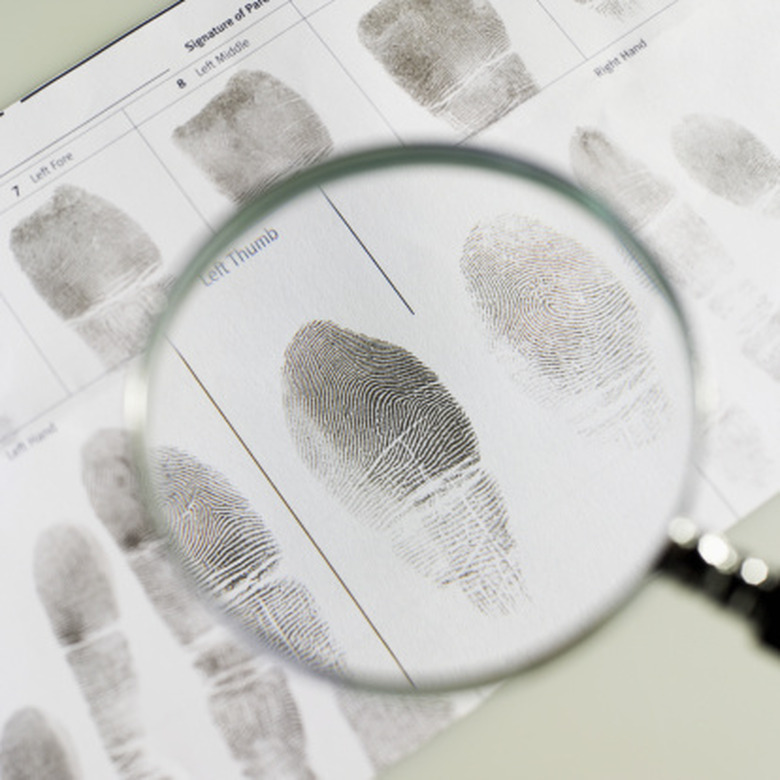Detective Science Experiments For Kids
Detectives carefully gather testimonials and trace evidence at crime scenes. Even if they have an eyewitness, they work like scientists to gather and process as many clues as they can to ensure that they reach the correct conclusion. They sometimes use the tiniest details, such as fingerprints or a drop of ink, to unlock mysteries. Kids can learn how to read clues like these with detective science experiments at home or school.
Ink Chromatology
Ink Chromatology
Ink chromatology means that you separate the dyes used in a pen and determine if a writing sample came from that particular pen. A detective might use this if someone illegally changed the dollar amount written on a check or wrote a ransom note. To conduct a chromatology experiment, you will need two different pens.Use two paper towels or coffee filter strips about 1-inch wide. Draw a dot on each paper with the pens. Make note of which pen you used for each paper. Place the paper in a cup of water with the dot just above the water line. As the water soaks up through the paper, you will see a distinctive pattern for each pen.
Witness Experiment
Witness Experiment
Sometimes two witnesses will have two different accounts or descriptions of a suspect because the crime or accident happens so quickly. Try this experiment to see who passes as a reliable witness. Cut out faces from a magazine or print out pictures on the Internet. Try to find pictures of the same size. Cut out the features and rearrange them to make a different face. Show the face to your witness. Scramble the features with the other picture pieces and ask your witness to put the face back together using the correct features.
Ballooning Fingerprints
Ballooning Fingerprints
Detectives identify some suspects by fingerprints lifted at a crime scene. With this experiment, you will study your own prints. Press one finger firmly on an ink pad, then press it carefully on a flat balloon. Do not smear the ink. When it dries, repeat with your other fingers. Blow up the balloon slightly and study the prints in detail. Use a magnifying glass, if possible. Try this experiment with a friend or classmate and compare your prints. Each person's prints will have a different pattern.
Find Height with Footprints
Find Height with Footprints
A footprint found at a crime scene provides an important clue. By measuring the length of the footprint, detectives can calculate the approximate height of the suspect. Try this experiment by measuring an adult first because these calculations do not always work with growing children. Measure a person's height. Next, measure the left foot from the wall to the tip of the big toe. Divide the length of the left foot by the height and multiply that number by 100. If you calculated correctly, you will get about 15. An adult's foot will measure about 15 percent of his height. Now measure someone else's left foot. Multiply the number by 100 and divide the answer by 15. This should give you the person's approximate height.
Cite This Article
MLA
Matthieu, Denise. "Detective Science Experiments For Kids" sciencing.com, https://www.sciencing.com/detective-science-experiments-kids-8329416/. 24 April 2017.
APA
Matthieu, Denise. (2017, April 24). Detective Science Experiments For Kids. sciencing.com. Retrieved from https://www.sciencing.com/detective-science-experiments-kids-8329416/
Chicago
Matthieu, Denise. Detective Science Experiments For Kids last modified August 30, 2022. https://www.sciencing.com/detective-science-experiments-kids-8329416/
